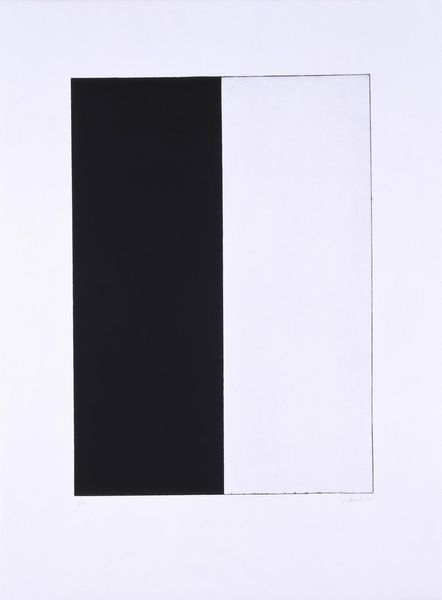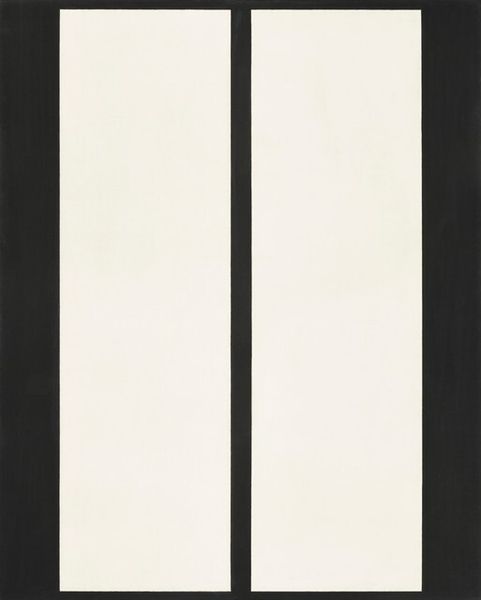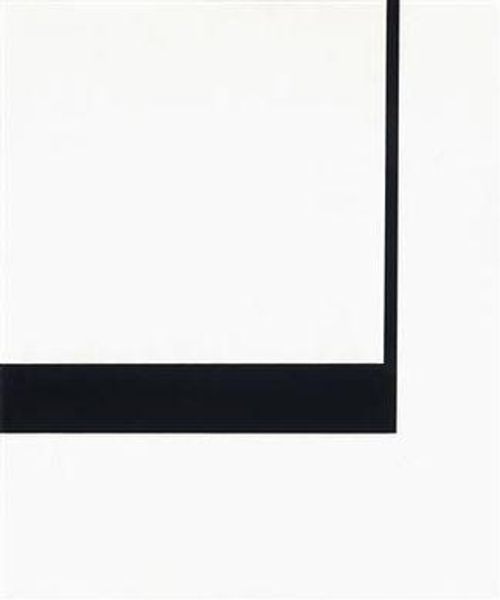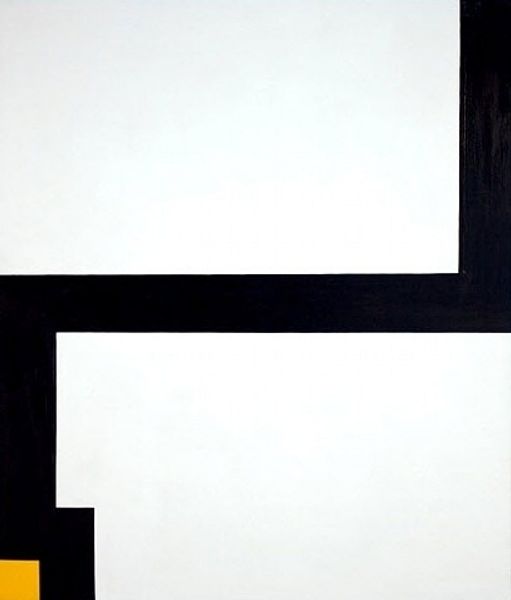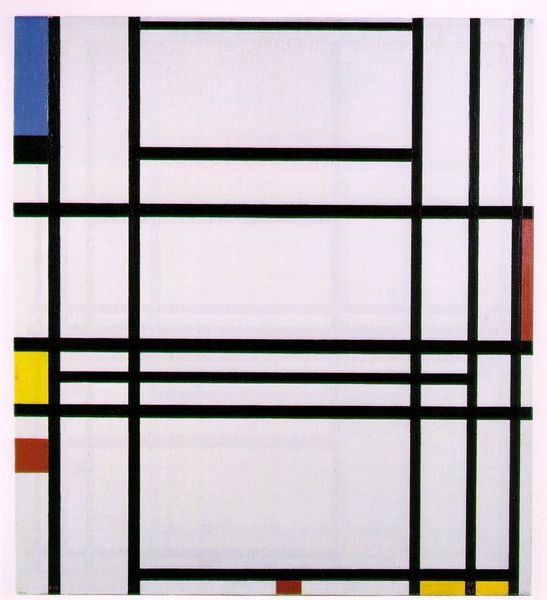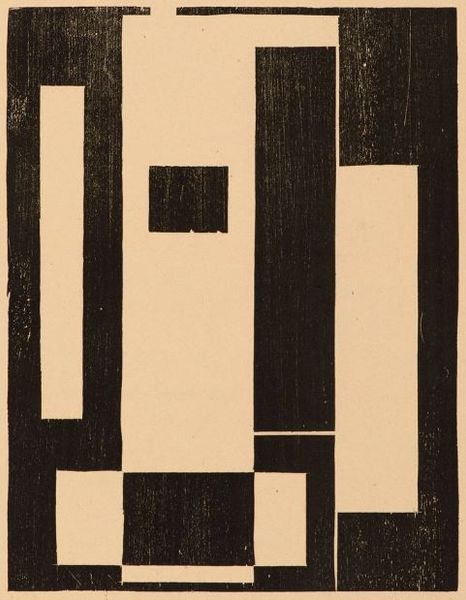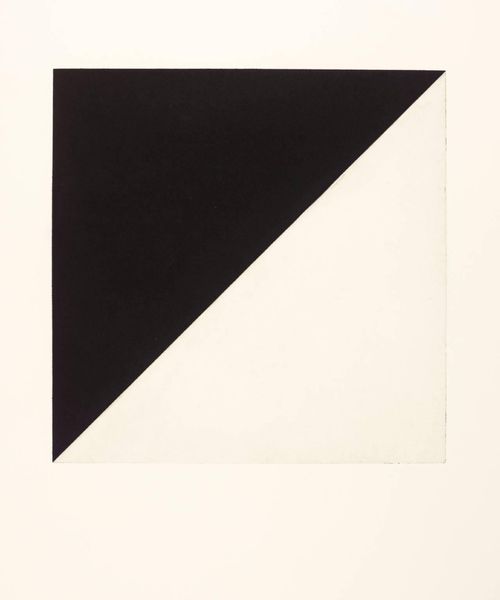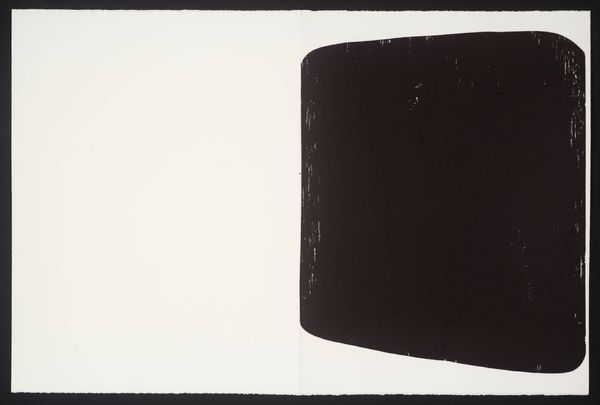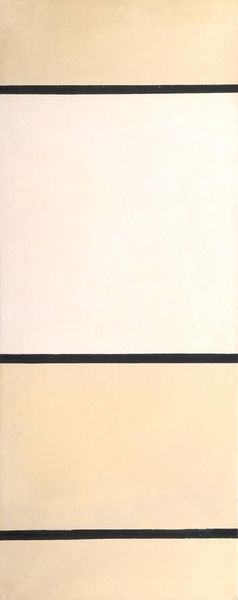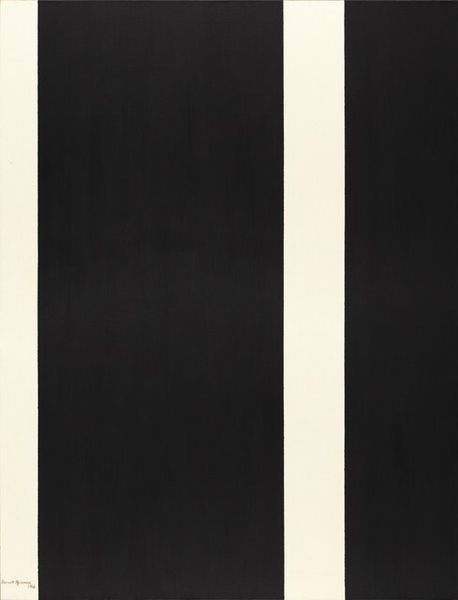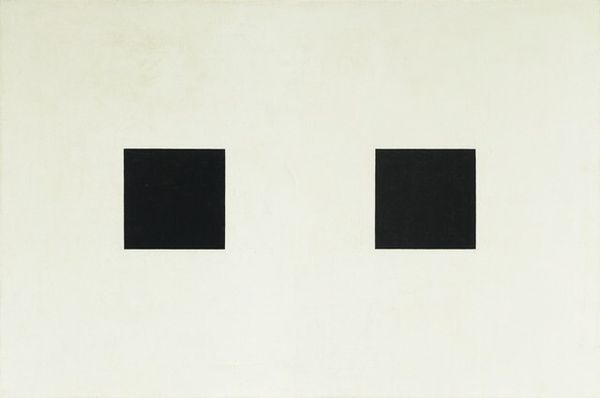
painting
#
painting
#
minimalism
#
op art
#
geometric
#
geometric-abstraction
#
abstract-art
#
line
#
abstract art
#
hard-edge-painting
Copyright: John McLaughlin,Fair Use
Curator: Let’s take a look at John McLaughlin's "Untitled Composition" from 1953. It’s a striking oil on canvas piece dominated by stark black geometric forms against a white background. Editor: My first impression is one of deliberate tension. The solid black shapes push and pull against the white expanses. There is a graphic boldness but the negative space almost feels like it has as much presence as the blocks. Curator: The timing of this piece is so important. In the post-war era, geometric abstraction provided an important new visual language. In this “Untitled Composition,” consider the rejection of the traditional easel painting in favour of bold flatness. How might the radical minimalism of this composition reflected a societal desire for renewal and stark simplicity after such global chaos? Editor: Absolutely, it speaks to that broader societal yearning for clarity and structure amid turmoil. But McLaughlin, who served as a Japanese language expert during WWII, was also deeply influenced by Zen Buddhism. So is this painting reflecting Japanese aesthetics that he observed and learned as part of his own history. And doesn't that add a layer to its meaning – ideas of emptiness, mindfulness and a stripping away of the non-essential? Curator: Precisely. And it’s crucial to remember the historical context of artistic institutions at this time too. Museums were exhibiting abstract art at an unprecedented scale, further legitimizing and codifying a distinctly modernist aesthetic. But for whom were these spaces designed, and whose aesthetic sensibilities were being centred? McLaughlin’s own biography certainly allows us to frame an art historical narrative of identity, intersectionality and race into it. Editor: It almost becomes an optical game. The clean lines and confident simplicity challenge our expectations and shift perception into foreground and background play. The absence becomes as powerful as the presence. I am very drawn to it. Curator: Considering McLaughlin’s broader career trajectory within California abstraction, I'm struck by how radical these compositions were, defying so many conventions and acting like almost philosophical statements on what painting *could* be. It invites questions of access, identity, power, and visual language that we can continue to interrogate. Editor: Absolutely. This piece is not merely a static painting; it becomes a vibrant arena for challenging perception and considering identity – I agree with the dialogue between historical narrative and contemporary thought. Thank you for illuminating these various historical narratives behind its deceptive austerity.
Comments
No comments
Be the first to comment and join the conversation on the ultimate creative platform.
